The best plants for koi ponds do more than create a pretty garden. They also help your koi fish thrive by oxygenating the water, providing shelter, and attracting beneficial wildlife.
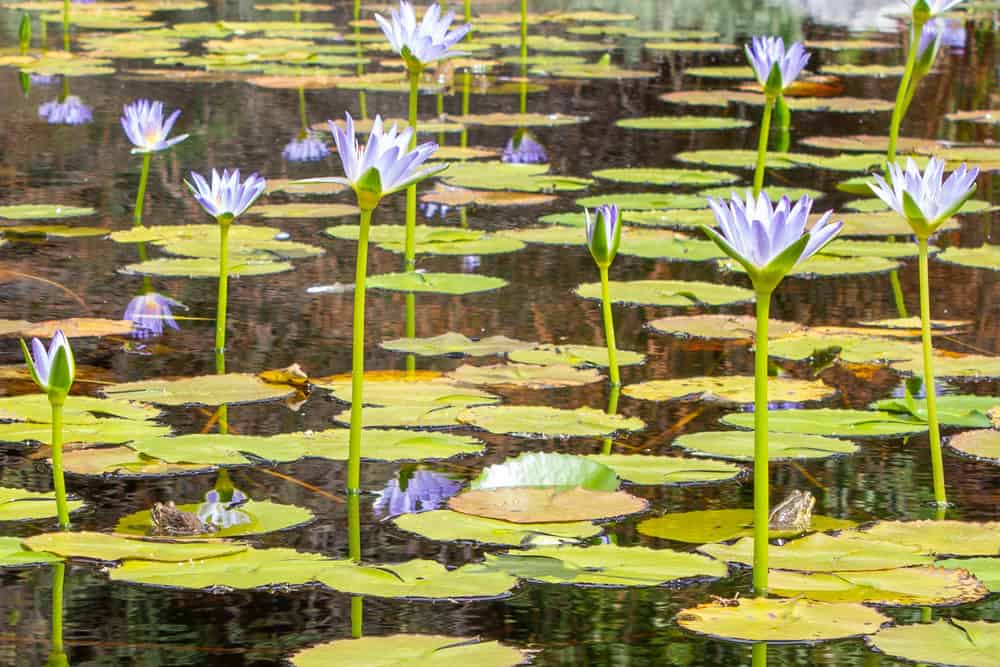
The right plants in your koi pond will increase its beauty and overall health.
So, below I list ten of the best plants for koi ponds, from submerged water grasses to alluring flowers that float on your pond's surface. Then, I'll discuss why pond plants are crucial for your koi fish. By the time you're done reading, you'll know exactly what to plant.
With bright blue or purple flowers, floating water hyacinths are a controversial pond plant. They grow up to three feet tall and create an impenetrable mat across pond surfaces, up to twelve feet wide. They're striking in a garden pond, and Koi fish love to nibble at them, but they're so fast-spreading that many areas consider them invasive.
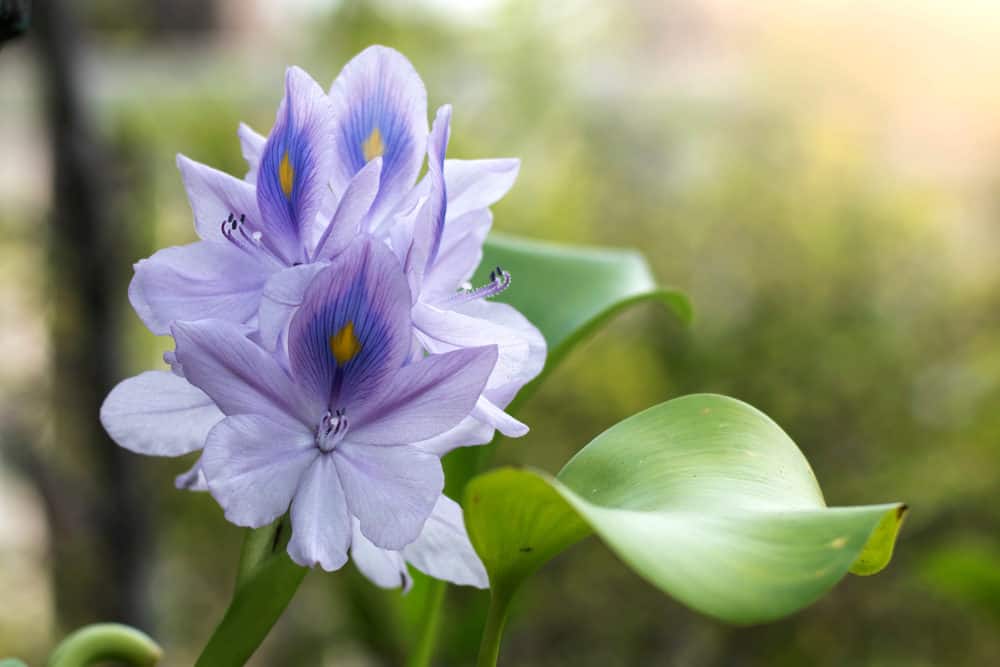
Water Hyacinth can grow everywhere from the equator to the northern United States. In tropical regions, they'll act as perennials, but further north, they'll only bloom annually. When they flower, you can count on them to attract plenty of hummingbirds and bees, adding to your koi pond's diverse habitat. They're also excellent for water filtration and will remove excess nutrients.
For a low-maintenance floating plant, the Water Lotus is a top pick. Its gorgeous white and yellow flowers are a favorite amongst koi pond owners. Unfortunately, Water lotus are incredibly picky about their climate, making them a no-go in many koi pond gardens.
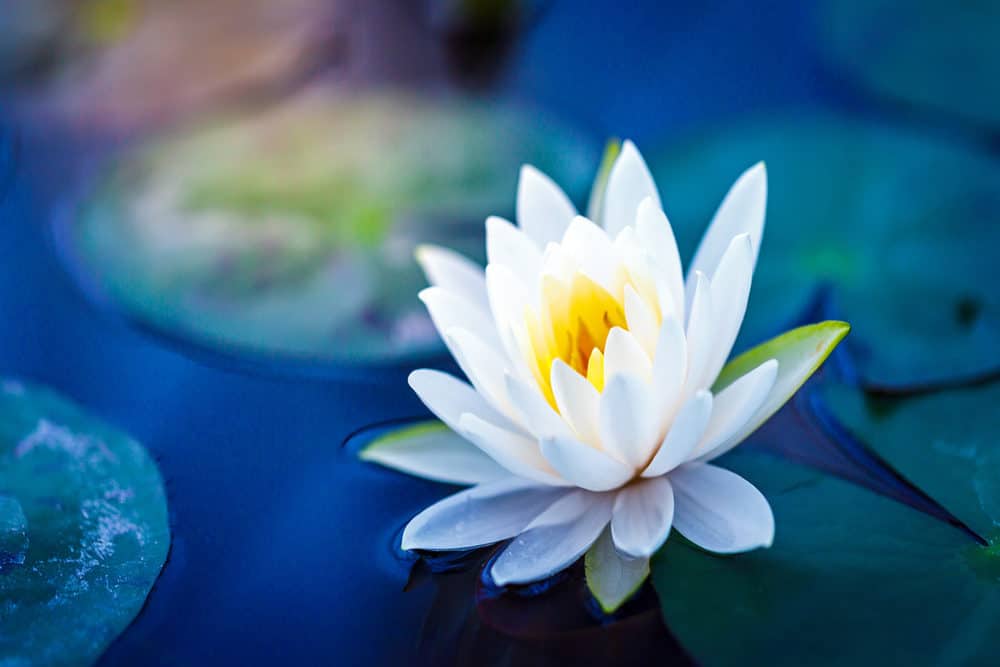
They need water between 75 and 87 degrees Fahrenheit to survive. They also prefer full sunlight, at least five hours per day. On top of that, these koi pond flowers require a lot of space. Their leaves can grow up to two feet long each! If you have a smaller pond but love the look of the water lotus, seek out a dwarf variety.
If a water lotus doesn't fit in your koi pond, consider a water lily instead.
Many confuse these two koi fish pond plants because they both produce striking flowers, and both will cover your koi pond in lily pads. But, water lilies are often smaller than lotuses, with leaves that grow a max of 18 inches across. Water lilies also have flowers that float on the water's surface, while water lotus flowers emerge above the waterline.
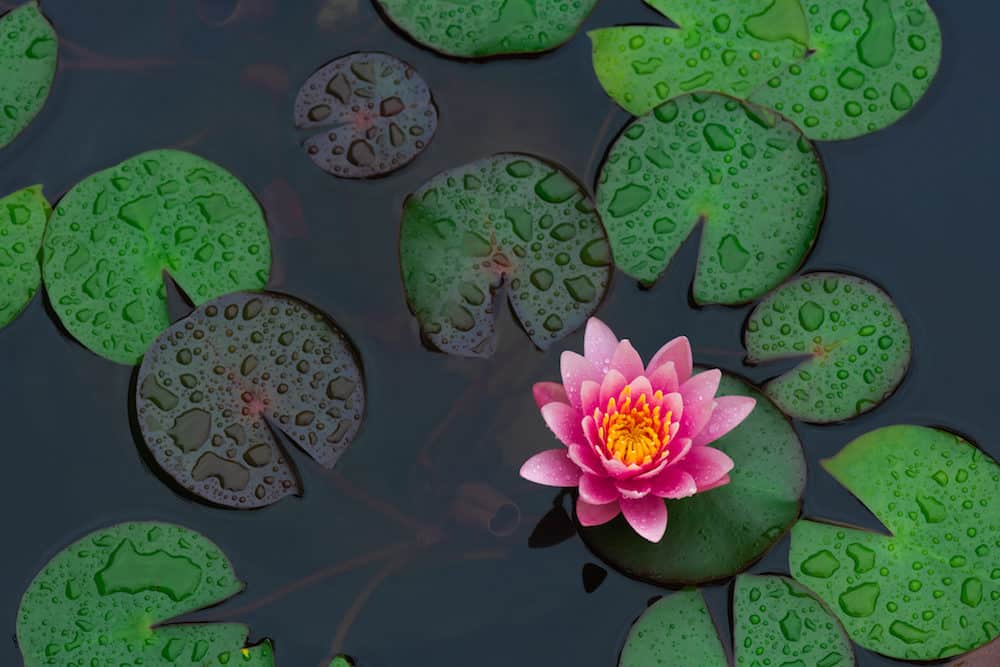
Water lilies come in a wide variety of colors and species and can grow in water depths of six inches to several feet. They thrive throughout North America in both tropical and hardy varieties. Tropical water lilies act as annuals, while the hardy types provide perennial blooms.
Koi will eat the roots of water lilies, but it's not their favorite snacking plant. Instead, they prefer to lay their eggs beneath the leaves. To ensure that your fish don't eat away all your koi pond water lilies, ensure you have plenty of other food options, like water lettuce or water hyacinth.
Horsetail is perhaps the oldest koi pond plant on this list. Some call it a living fossil plant, and you can trace its history back to prehistoric times. Since then, it's been key for water filtration and pond bank stabilization.
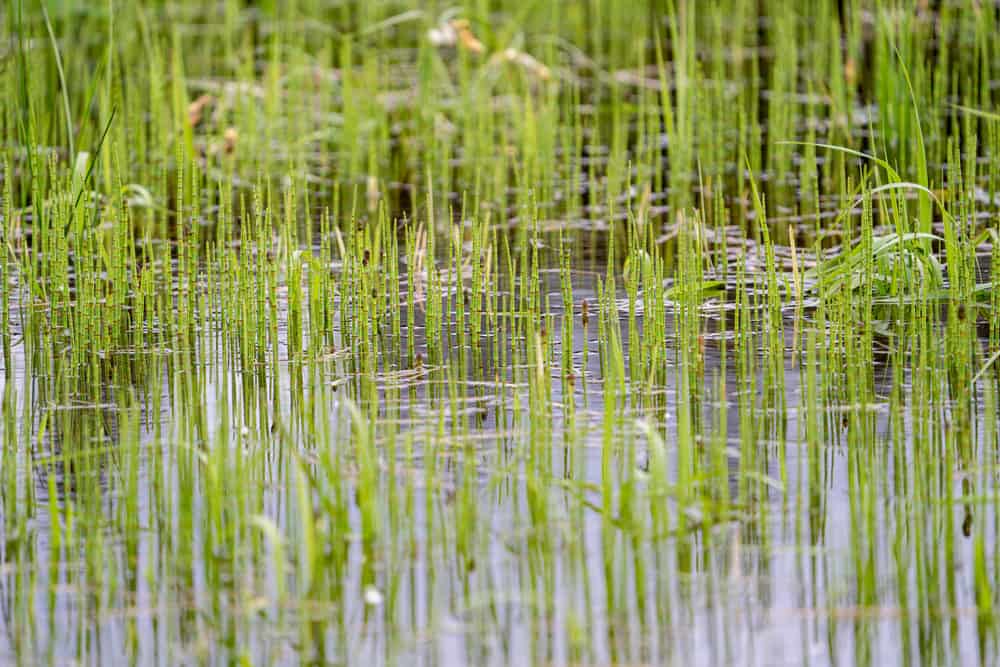
This tall, reedy aquatic plant grows in water a few inches deep or along wet and muddy banks. Also called scouring rush or marestail, this water plant can grow from two to five feet tall. It's dark green with jointed nodes ringed in deep black circles. And though it doesn't flower, it can "bloom" with leafy green sprouts that shoot out from its sides.
Striking and elegant, Horsetail grows in partial shade and won't overtake the landscape. Koi fish won't eat the hollow stems, but they do enjoy hiding in the plant's shady coverage.
Water poppies are another example of fantastic koi pond pants. These fast-growing plants provide excellent water filtration. With ovular leaves and bright yellow flowers, they're also aesthetically pleasing.
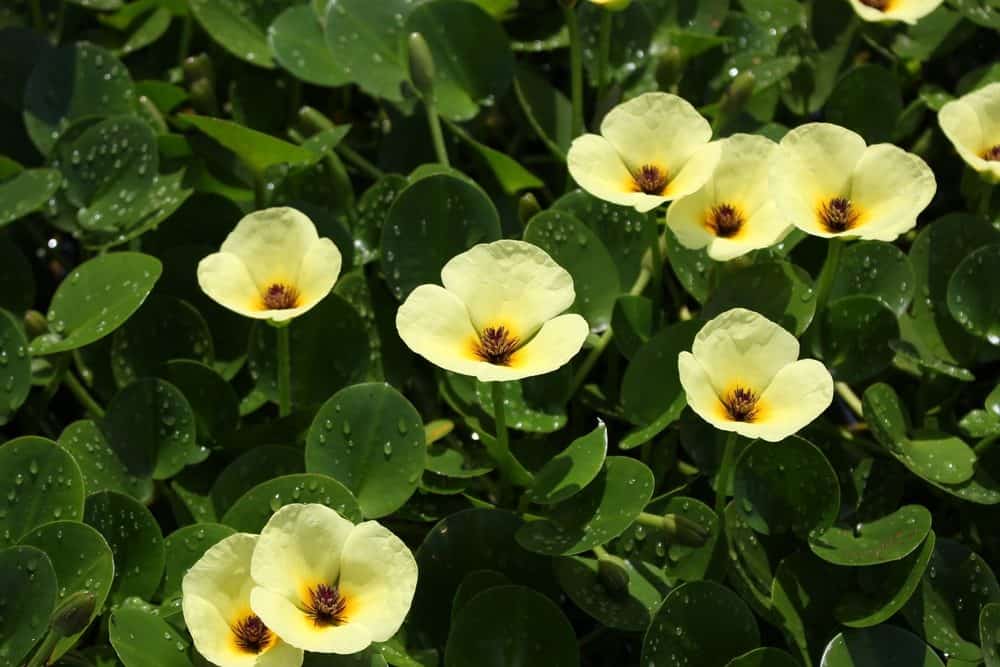
They grow best in USDA hardiness zones 9-11, essentially the southern half of the U.S. as well as along the coasts. Outside that region, where ponds are prone to frost, koi pond owners will need to move their water poppies indoors for the winter months.
Water Iris is a gorgeous and functional plant. Grown throughout the U.S. and most regions of the world, these flowering koi pond plants come in stunning whites, blues, yellows, and pinks. All of them have sharply pointed leaves and stand three to four feet tall.
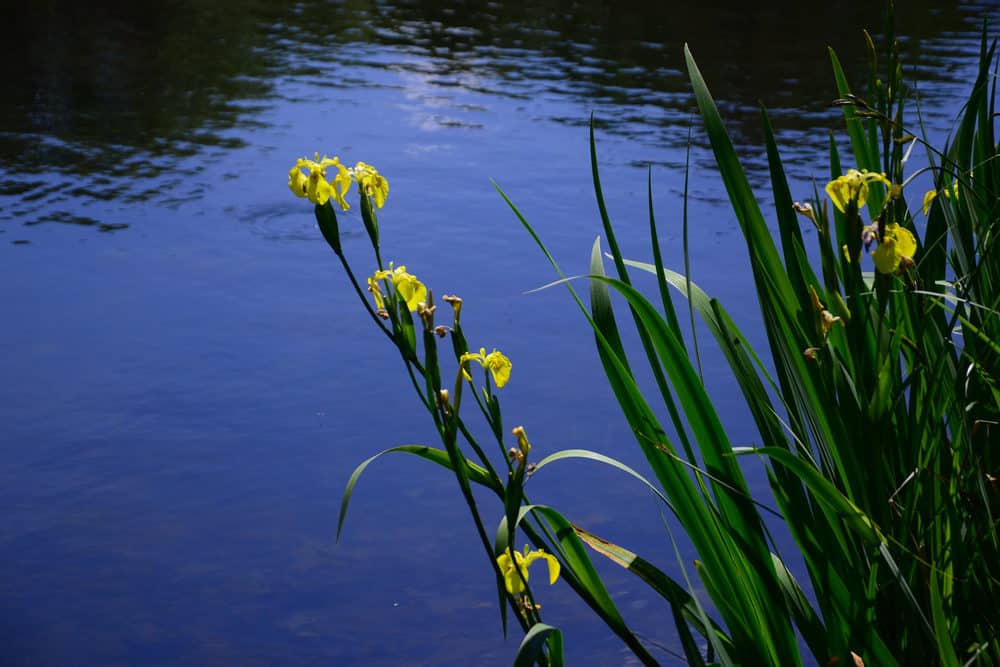
Water irises are incredible at filtering water and can remove even metal contaminants. Koi fish won't eat them, but they'll help create a healthy environment for your fish to thrive.
That said, these are fast-spreading plants, and some consider them to be invasive. So, many choose to plant them in pots and then submerge them, which can help control the spread.
Water lettuce is a floating plant with compact but intricate leaf structures. They provide shelter, shade, and food for koi fish as well as several other pond creatures. Water lettuce also acts as an effective filter for excess nutrients. By filtering them out and competing for sunlight, water lettuce also helps block algae growth in ponds.
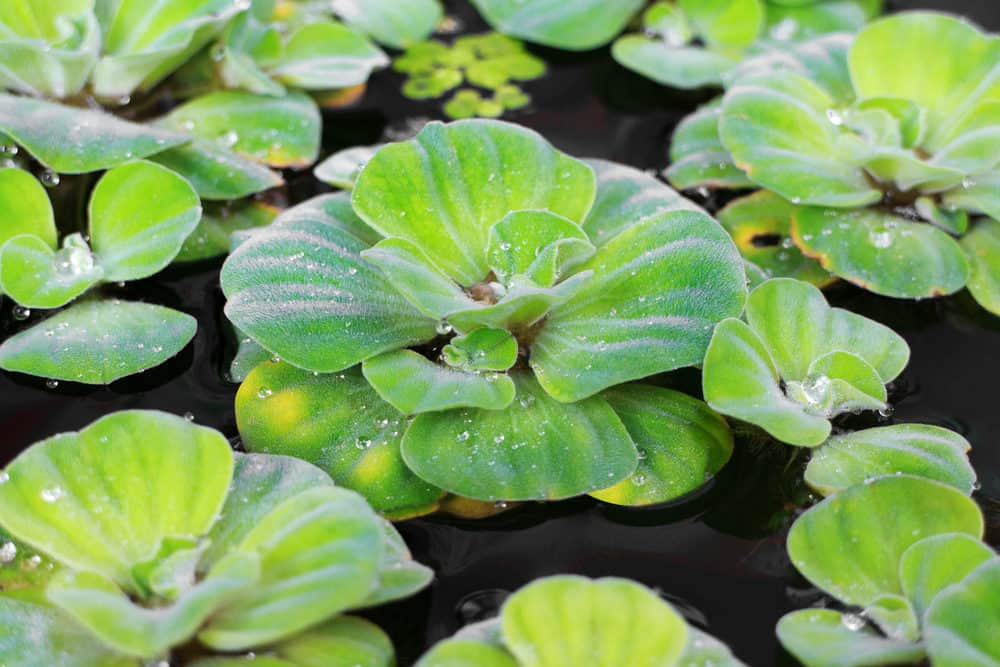
This is a low-maintenance plant that can grow in almost any condition, and humans have found it on every continent except Antarctica.
That said, it grows quickly in warmer and tropical areas, creating dense mats on the water's surface. If these mats grow too thick, it can become a problem for your fish! To control water lettuce, you can occasionally rake or skim the plants from the surface of your pond, easily taking care of the problem.
Eelgrass is a classic bog plant that grows wholly submerged, creating underwater meadows that fish love. These long green grasses provide shelter and oxygenation. They're also very resilient, and koi won't bother them much. However, ducks and other small waterfowl love eating eelgrass. So, if you'd rather not attract birds, you may not want to plant them.
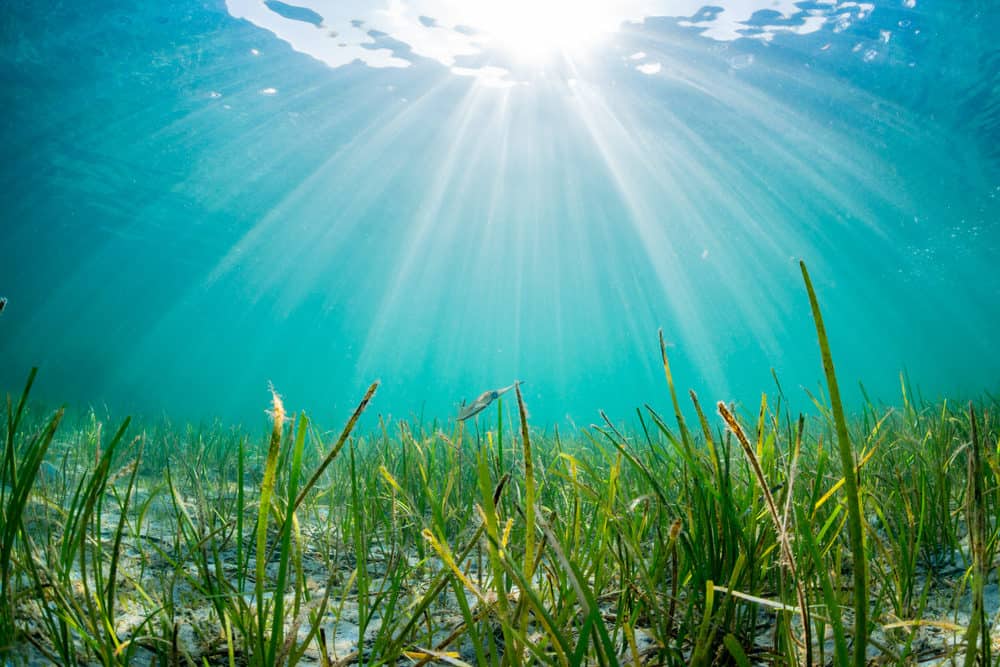
Eelgrass, also known as water celery, grows three feet tall and has long skinny leaves. It grows heavily in areas where there's plenty of sunlight. So, to control it, make sure you have other light-blocking plants in and around your pond.
Water purslane is one of our favorite plants for a koi pond, especially the red variety. With its striking purple or crimson leaves, it adds color to any pond garden. It's also a good oxygenator and provides shelter for your koi fish.
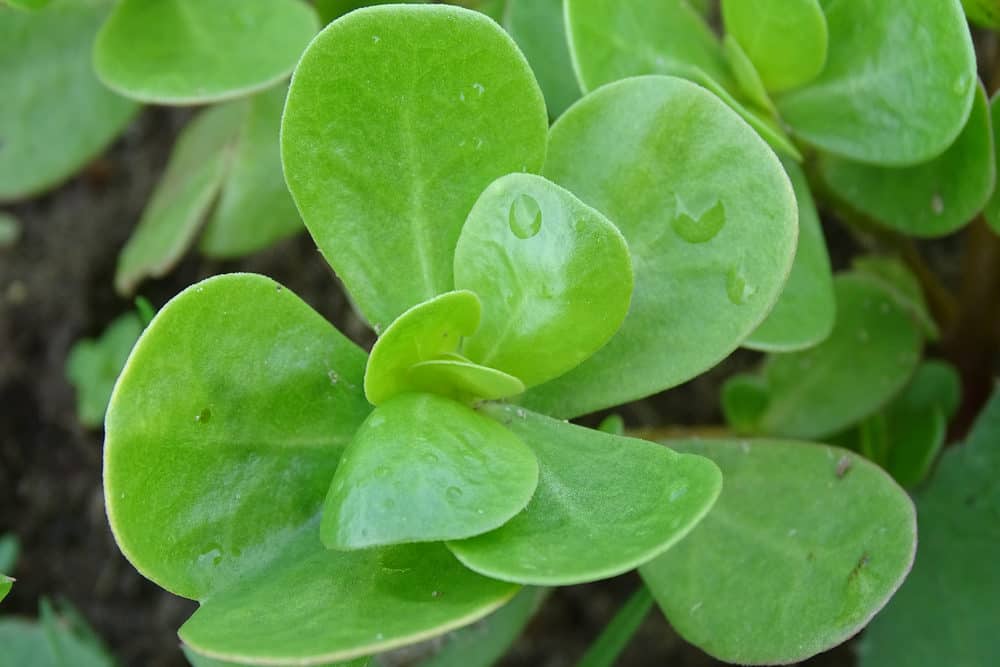
You can grow water purslane as a floating plant on your pond's surface, or you can completely submerge it. Either way, it requires full sun for growth.
Water purslane in a fast-growing plant, but it's also easy to control. Each plant usually covers a large area, so you can remove the entire plant from your pond with one hard pull.
You can grow water smartweed submerged or in boggy soil near your pond. It grows in thick colonies up to three feet tall with cylindrical leaves and bright colored flowers. When you submerge it, the upper leaves will rest on the water, with the flowers sprouting a few inches above your pond.
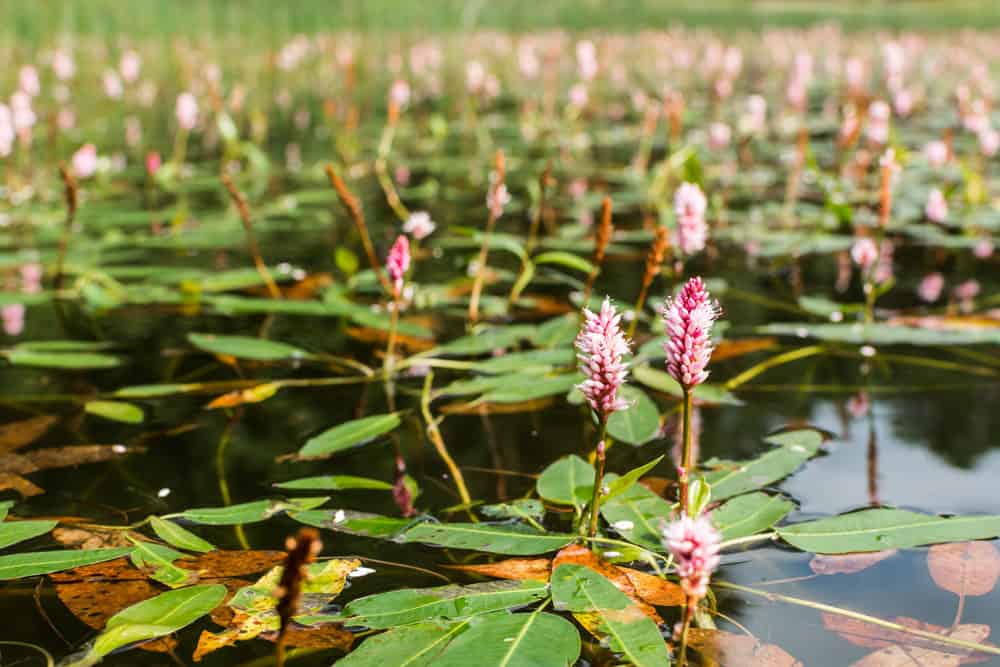
Water smartweed is native throughout the U.S. and Canada. It's an excellent oxygenator and will also purify your pond. Your koi fish won't eat it, but they will appreciate its effects. Smartweed attracts songbirds and small aquatic insects like snails and worms, which koi fish love to snack on.
Smartweed grows quickly, and you'll need to maintain it. Regular cuttings will help prevent overgrowth, keeping your pond healthy for your fish.
Growing water plants for your koi pond isn't simply aesthetically pleasing. It's also a good way to encourage a healthy environment, one that your koi fish will thrive in. There are several reasons you need plants in a healthy pond. Below, we'll discuss each of them briefly so you can better understand the plants your koi pond needs.
Dissolved oxygen is vital for keeping up water quality. If there's not enough oxygen in your water, fish will suffer. At oxygen levels of 9 to 10ppm, koi fish thrive, and below 3ppm, koi fish will start to die.
Dissolved oxygen comes primarily from two sources: the atmosphere and pond plants. So, planting a variety of oxygenating plants in your koi pond is a good idea. Waterfalls and a supplemental aeration pump can also help if you sense the oxygen in your pond is on the low end.

Koi fish prefer an environment where they can seek shelter and shade, both of which pond plants provide. Female koi will also need a place to lay their eggs. Beneath the cover of a lily pad is the perfect place.
Koi eat many pond plants, but even the ones they won't touch can be beneficial to your pond's health. Koi pond plants attract other wildlife like insects, frogs, and birds, increasing the biodiversity of your pond. Some of those pond critters are also good snacks for your koi to munch on.
Most koi fish owners prefer water that's clean and clear, making their pets' striking patterns easy to see from above. Pond plants encourage clean water by filtering contaminants and fish waste. Plants like the water iris, for example, are exceptionally efficient at removing harmful toxins.
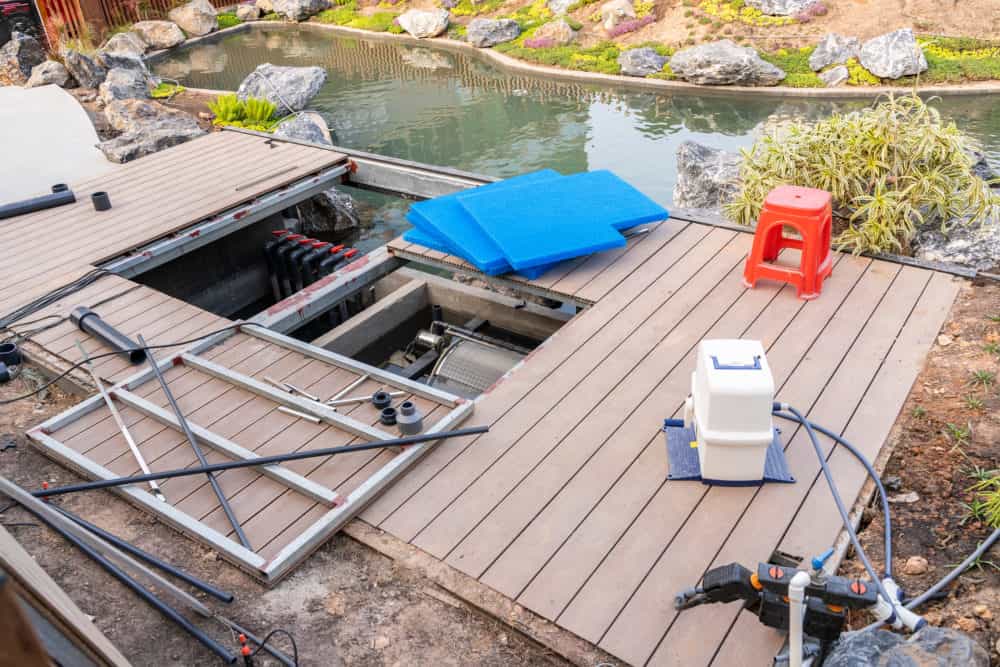
Plants that grow on the pond's surface, like lilies or water lettuce, inhibit sunlight and create shade for fish. By blocking the sun, they also ensure algae doesn't overtake your pond, creating a healthy environment your koi fish can thrive in.
Floating plants can keep the water temperature down on hot summer days by providing shade for your fish to shelter beneath. Koi do well in water up to 75 degrees Fahrenheit, which is relatively warm, but if you live in a hot area and have a smaller pond, providing shade will be crucial. Consider adding lilies or lotus plants to regulate the water temperature.



